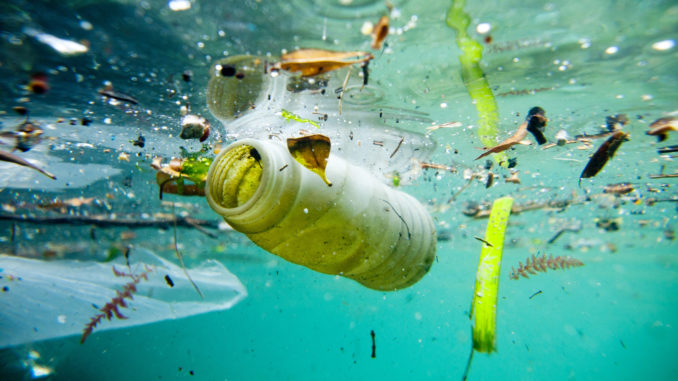
It’s naïve to assume that humans, sharing the same global environment and eating at the top of the food chain, are magically spared contamination from plastics. Though no one has yet measured how much plastic pollution humans actually carry around, there’s plenty of evidence we’re taking the stuff in, by eating, drinking and just breathing.
Discovery of sea life carcasses chock full of plastic waste sparked concern that sea creatures consumed by humans are imbibing plastics too. Research reveals that visible plastic debris is taken up by life forms throughout the ocean food web, from small plankton-eating fish to shellfish, turtles, dolphins and whales.
However, most marine plastics are invisible to the naked eye. Petroleum-based plastics resist bio-degradation, but instead fragment into ever smaller pieces, eventually reaching millimeter and nano-scale dimensions dubbed microplastics. Micropla
Plastic production has increased from 1.7 to 322 million tons annually over the last 60 years. The result is that our homes today contain a mix of plastic objects, from furniture, bags, bottles and toys to synthetic clothing and textiles, not to mention toiletries and cosmetics that often contain tiny microbeads. The fragmentation through friction, heat or light of plastic objects found indoors can introduce microplastics into the air inside.
It has found that while microplastics are present outside in open air, concentrations of the pollutant seem to be higher indoors. Recent studies have shown that microplastics have been found in our bottled and tap water, additional research now reveals that the majority of microplastics in our bodies comes from the air we inhale each day. Air is contaminated by microplastic fibers sloughed off during normal abrasion of clothing, upholstery and carpeting, and we’re not just breathing them in.
Research suggests that humans likely consume more microplastics from the dust that invisibly rains down on their meals than from the food itself. Research also shows that most of the microplastics found in the air indoors comes from plastic fibers released from synthetic clothes as well as textiles used in furniture.
Because these microplastic fiberstend to be longer, they’re more likely to be harmful if a person breathes them in. Simply showering with a body scrub can flush 100,000 microplastic beads into wastewater then into the air, the United Kingdom’s Environmental Audit Committee reported.
One study reported that 36 of 39 brands of table salt brands from 16 countries/regions, including the United States, contained microplastics. In an analysis of tap water from five continents, over 80 percent of city samples contained plastic microfibers from synthetic textiles. Less than a tenth of the nine billion tonnes of plastic ever produced worldwide has been recycled, most ending up in landfills or as litter where fragmentation ensues. Water treatment plants weren’t designed to remove microplastics. Treated water and sewage sludge are awash in microfibers sloughed off from synthetic fabrics during laundering which consequently pollute oceans, lakes, streams and soils.
How breathing in microplastics harms your health
While the range of health effects resulting from microplastic inhalation are not yet clear, experts believe the threat to human health is high. The size of microplastics, which are small plastic particles that are less than 5 millimeters in diameter, make it easier for them to enter deep into a person’s lungs. They can then induce lesions in the respiratory system, Luo said.
“What makes microplastics particularly harmful is that they act as carriers of other pollutants in the air,” he said. “Due to their size and shape, pollutants from bacteria, viruses or car exhaust easily stick to the microplastic particles and can therefore enter the bloodstream through the lung tissue.”
Luo added that microplastics found in lung tissue also indicate that they are bio-persistent, meaning that the body can’t rid itself of the inhaled plastic particles.
These microplastics can lead to cardiovascular and cerebrovascular diseases, induce cancer and impact the immune and nervous systems, according to Luo.
Children face the biggest threat, as they’re more active than adults and therefore breathe more rapidly and take in more air in relation to their body weights. Their young respiratory systems are also still developing, said Luo.
Babies and toddlers often play on floors and may evenchew on plastic toys, according to the World Economic Forum.
It cited research of Tehran’s urban dust, which showed that young kids may swallow as many as 3,200 plastic particles annually.
References:
- https://emagazine.com/ingesting-microplastics/?utm_source=newsletter&utm_medium=email&utm_campaign=earthtalk_this_week_january_9_2019&utm_term=2019-01-13
- https://www.accuweather.com/en/weather-news/most-of-the-indoor-air-we-breathe-is-polluted-with-microplastic-particles/70005341
By: Dr. Bhawana Asnani.
Happy to see Reviews, Additions, Suggestions and Comments, further.

Leave a Reply
You must be logged in to post a comment.